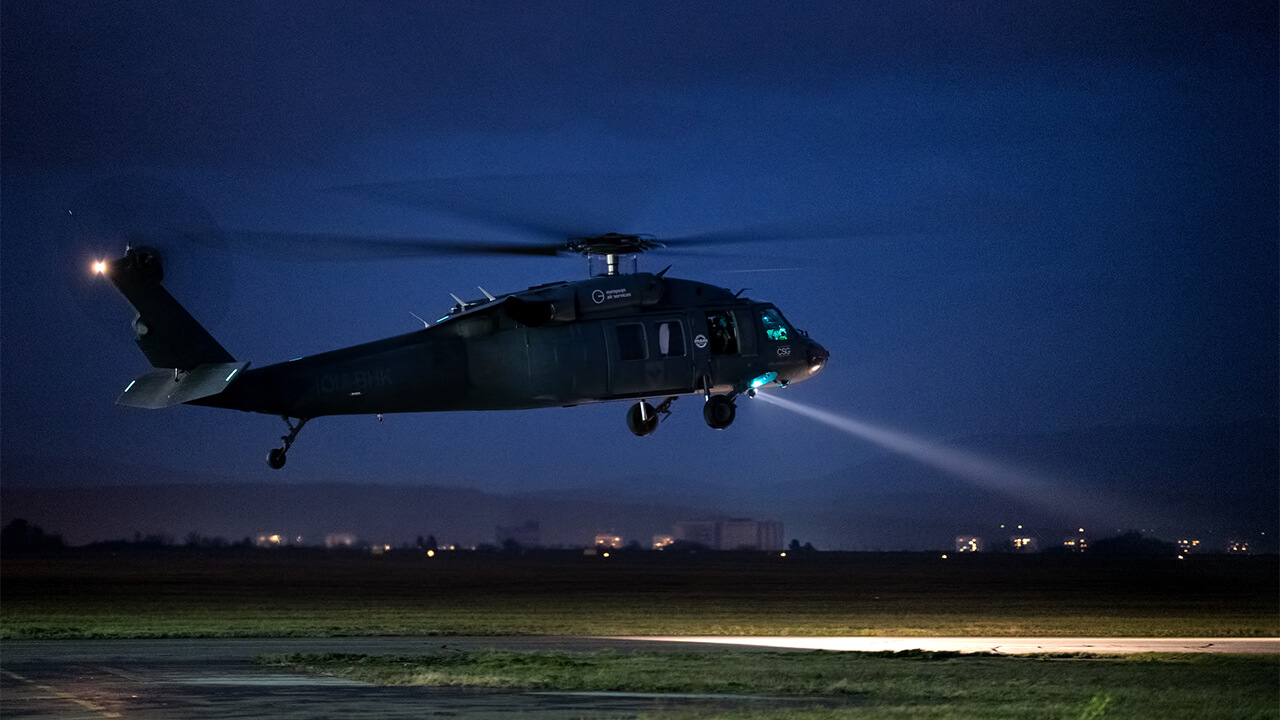UH 60 Black Hawk Helicopter: Enhancing Military Efficiency and Air Mobility
Wiki Article
Whatever You Need to Know Regarding the UH 60 Helicopter
The UH-60 helicopter, a foundation of United state Army air travel because its launching in 1979, represents an impressive blend of engineering and operational adaptability. As military demands advance, so too does the helicopter, with recurring innovations aimed at boosting its abilities and incorporating modern-day innovations.History of the UH-60
Developed in the late 1970s, the UH-60 Black Hawk helicopter became a response to the united state Army's need for a flexible utility helicopter that might execute a selection of goals under challenging conditions. The catalyst for its design was the shortcomings determined in the earlier helicopters utilized throughout the Vietnam Battle, particularly in terms of speed, maneuverability, and survivability.The Black Hawk was created by Sikorsky Airplane, integrating sophisticated modern technologies and products to boost its efficiency and durability. It was officially introduced into solution in 1979, swiftly ending up being a critical property for army procedures - uh 60. Its capability to move soldiers, clinical emptying, and logistical support in both battle and altruistic objectives made the Black Hawk an invaluable element of the U.S. Military's air travel fleet
Throughout the decades, the UH-60 has been constantly updated, adjusting to the transforming nature of warfare and the progressing demands of contemporary army procedures. Its operational history consists of participation in significant conflicts, peacekeeping goals, and disaster relief efforts, strengthening its online reputation as a trustworthy and efficient helicopter in numerous atmospheres worldwide.

Style and Specs
The layout of the UH-60 Black Hawk helicopter constantly shows a commitment to operational effectiveness and adaptability. Developed by Sikorsky Aircraft, this medium-lift energy helicopter includes a streamlined, aerodynamic body that improves rate and maneuverability. Its tandem rotor system, characterized by 2 counter-rotating blades, minimizes resonance and enhances lift ability, permitting for more secure procedures in varied settings.The UH-60 is powered by two T700-GE-701C turboshaft engines, providing an optimum rate of approximately 180 knots and a series of around 400 maritime miles. Its robust airframe is constructed from advanced composite products, making sure durability while maintaining a relatively reduced weight. The helicopter has an optimum gross weight of regarding 22,000 pounds, supporting a flexible haul arrangement.

Roles and Objectives
A flexible platform, the UH-60 Black Hawk helicopter offers a multitude of duties and objectives within armed forces procedures. Developed mostly for troop transportation, it can lugging as much as 11 soldiers, making it an essential possession for rapid implementation and logistical assistance.Along with troop transportation, the UH-60 excels in clinical emptying (MEDEVAC) missions, equipped with innovative clinical devices to supply crucial treatment throughout transit. Its capability to run in varied environments improves its efficiency in combat search and rescue (CSAR) operations, where speedy extraction of personnel is vital.
The helicopter additionally plays a significant role in reconnaissance and surveillance goals, using onboard sensors and devices to collect intelligence. Its convenience expands to logistical support, qualified of moving products and tools to forward operating bases.
In combat operations, the UH-60 can be outfitted with different weapon systems, enabling it to give close air assistance. Its multi-role capacity makes the Black Hawk an indispensable tool for modern army pressures, adapting effortlessly to the advancing demands of battleground situations and making certain objective success across a series of operational contexts.
Performance and Abilities
Recognized for its durable performance, the UH-60 Black Hawk helicopter flaunts outstanding abilities that boost its functional effectiveness throughout numerous objectives. uh 60. This multi-role aircraft is outfitted with effective twin-engine Turbomeca Arriel 1D1 engines, giving outstanding rate and maneuverability, with a maximum cruise speed of around 150 knots and an operational series of around 400 maritime miles
The Black Hawk's sophisticated avionics and fly-by-wire control systems dramatically improve trip safety and security and handling, allowing it to run in diverse atmospheres, including negative climate condition. Its flexibility is more exemplified by its capacity to carry approximately 11 fully outfitted troops or a haul of roughly 8,000 extra pounds, making it optimal for troop transport, clinical emptying, and logistical assistance missions.
In Addition, the UH-60 is developed for survivability, including reinforced airframes, ballistic defense for crew and travelers, and progressed countermeasure systems to avert risks. The helicopter's dexterity and speed, view it integrated with its ability for rapid deployment, make it an important possession in modern armed forces operations, making sure that it stays a vital component of tactical air support and battleground mobility.
Future Advancement

One considerable emphasis is the integration of advanced avionics systems, which will certainly improve situational recognition with enhanced navigating and communication abilities. This includes the possible use of expert system to help pilots in decision-making and mission preparation.
In addition, future versions might integrate innovative materials and layout attributes to reinforce the helicopter's resilience and lower its radar signature, improving survivability in contested atmospheres.
The introduction of hybrid-electric propulsion systems is additionally on the horizon, intending to improve fuel efficiency and minimize logistical burdens. Such innovations could expand operational array and reduce the helicopter's ecological footprint.

Final Thought
The UH-60 helicopter represents a substantial innovation in armed forces air travel because its intro in 1979. The UH-60's enduring visibility underscores its crucial role in contemporary military operations and highlights the recurring development of army air travel technology.The UH-60 helicopter, linked here a cornerstone of U.S. Military aviation given that its debut in 1979, represents a remarkable mix of engineering and functional convenience. As armed forces requirements advance, so also does the helicopter, with ongoing innovations aimed at improving its capabilities and incorporating modern innovations.The design of the UH-60 Black Hawk helicopter constantly mirrors a dedication to functional efficiency and flexibility. Established by Sikorsky Aircraft, this medium-lift utility helicopter includes a smooth, wind resistant body that improves rate and ability to have a peek at this website move.The UH-60 helicopter stands for a substantial innovation in army aeronautics because its introduction in 1979.
Report this wiki page